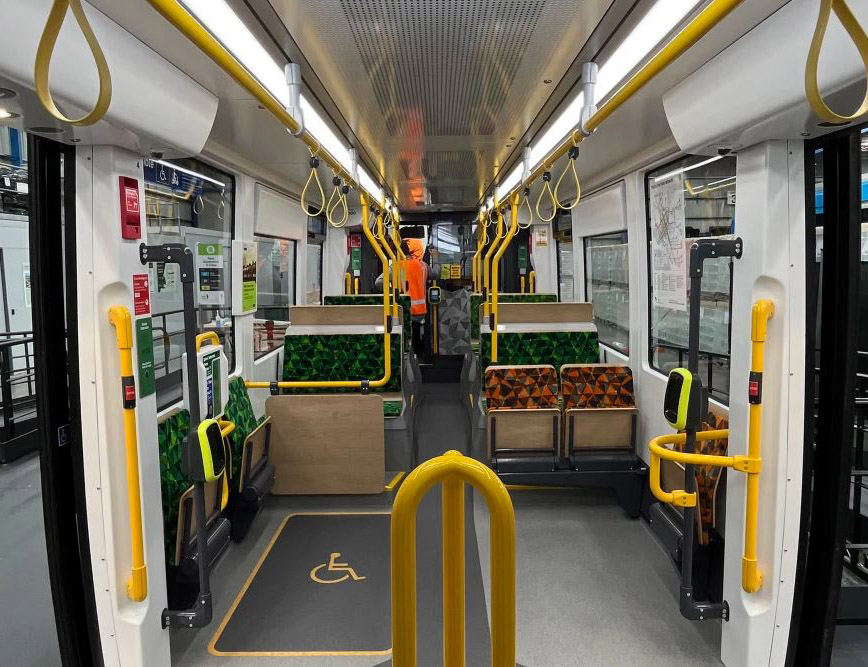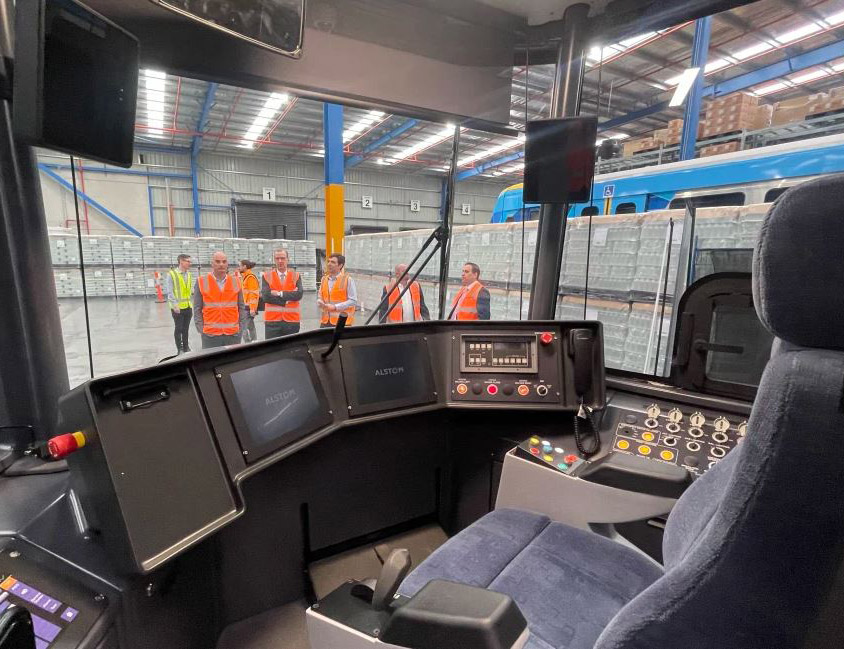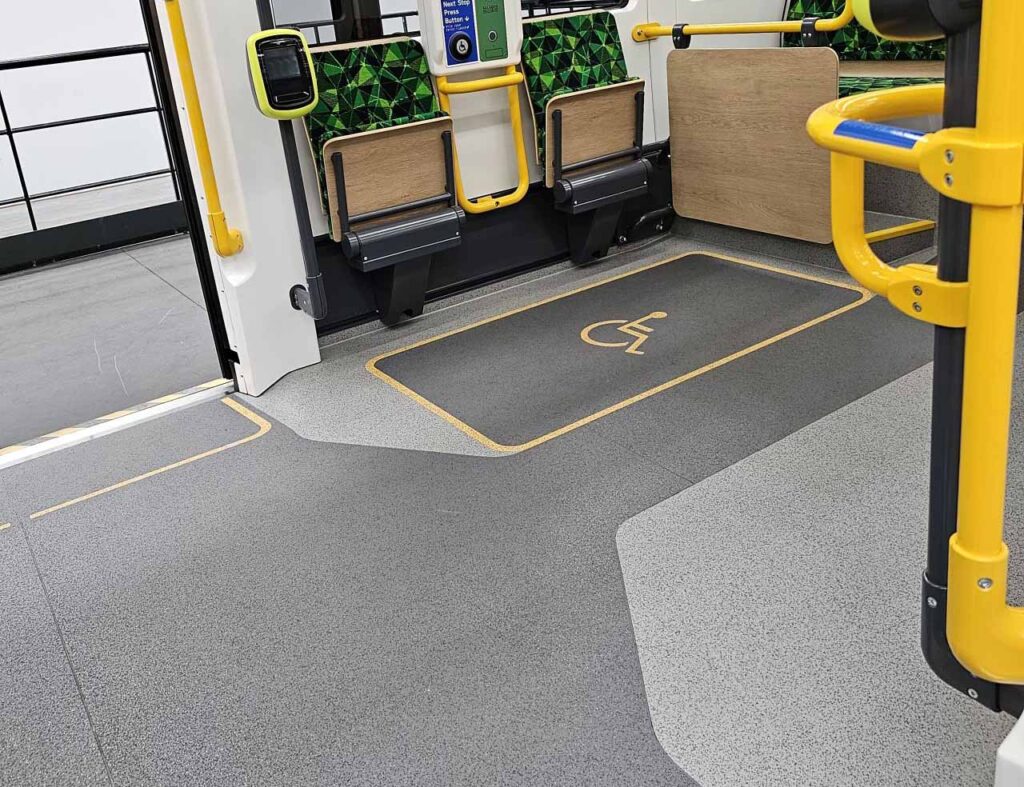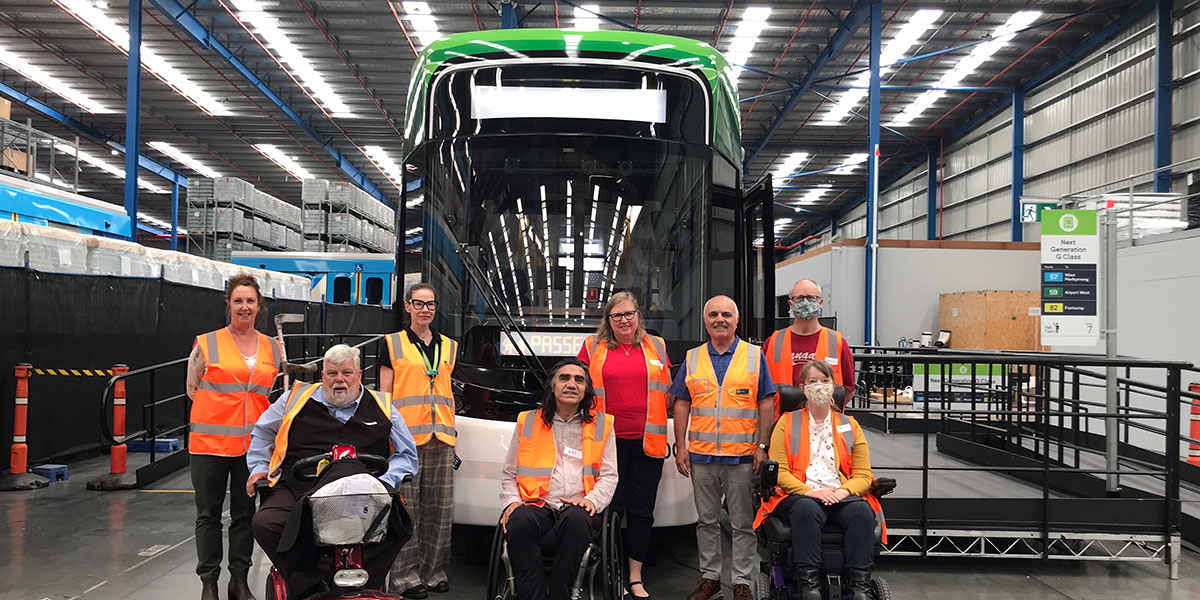by Nazim Erdem, AQA Practice Leader
The Victorian Government is investing $1.85 billion in 100 new next-generation G Class trams, and a new tram maintenance and stabling facility at Maidstone in Melbourne’s west. Over the past two years, I’ve been involved with, and seen the progress of the next generation G Class tram at different stages.
Through these consultations, organised by Yarra Trams, Department of Transport and Planning and Alstom, they were given a broad range of feedback and insights that are being used to inform and help refine the tram’s final design, which will make it easier for everyone to catch the tram, including:
- the value of priority seating
- the ability to easily request assistance and being able to speak with the driver
- the importance of smoothing out the accelerating and deceleration rates of trams
- the need for better fixed and dynamic passenger information delivered in a range of formats; and of course physical access


A few weeks ago, I was invited to see the latest mock-up of the tram and provide feedback of the current features. It was great to have a look at the inside and the outside, and be able to physically board the tram. The tram will start to roll out onto the network in 2025.Integral to this has been their co-design process, working with accessibility, passenger, driver, and technical stakeholders to understand their needs and feedback.
The tram looks great and has a very good internal layout, and it’s great to see they have been consulting with people with different types of disability to try and meet all their individual needs. Even though they’ve been consulting with people with varying disabilities, I am hoping they can address some of the constructive criticism I provided them. One main criticism I had was the fact the internal floor is not completely flat. There is a two-foot long, slight incline from the doors. The problem is when people in wheelchairs disembark the tram, there is a lip onto the platform.
Physics says that if you hit a lip at speed going downhill, there’s a good chance you will somersault out of your wheelchair. However I feel the ship has sailed in addressing some of these.

Of course, the new G Class tram is only one part of making the tram network more accessible. The other main part for people with physical disabilities is access to Super Stops, which provides level platform access for wheelchairs, strollers, and scooters. As we know, Super Stops are far and few in between, and there have been major delays in getting these rolled out.
As people say, “what’s the point of having low-floor accessible trams if you can’t get on or off where you need?” It’s a very valid argument. I have heard whispers that the developers are working on a solution where anyone, wheelchairs included, will be able to board and disembark at any tram stop; stay tuned.
To conclude, the next generation G Class trams are being designed to make it easier for people with disability and mobility aids to use public transport. The trams will feature new accessibility technology, a low floor design throughout, and additional doors. They will feature a more modern and streamlined design compared to older tram models, have improved performance and energy efficiency, including battery storage. But we’ll have to wait until 2025 to see how many boxes it ticks.
- February 1, 2024




